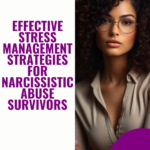 Introduction
Introduction
Dealing with narcissistic abuse can be a deeply challenging and traumatic experience. Narcissistic abuse occurs when someone with narcissistic tendencies manipulates, belittles, and undermines another individual, causing significant emotional harm. Recovering from such abuse requires time, support, and a proactive approach towards emotional healing. In this article, we will outline seven essential steps to help you navigate the journey of emotional healing after narcissistic abuse.
Recognizing Narcissistic Abuse
Before embarking on the path to healing, it is crucial to understand the signs and effects of narcissistic abuse. Narcissists often exhibit grandiosity, a lack of empathy, and a constant need for admiration and control. They exploit and devalue others, leaving lasting emotional scars. Recognizing the presence of narcissistic abuse is the first step towards breaking free from its grasp.
Step 1: Acknowledge and Validate Your Feelings
The initial step towards emotional healing is acknowledging and validating the range of emotions you may be experiencing. It is common to feel anger, sadness, confusion, and even guilt after narcissistic abuse. Understand that your feelings are valid and deserving of acknowledgment. Give yourself permission to feel and process these emotions without judgment.
Step 2: Establish Boundaries and Implement No Contact
Creating and enforcing boundaries is essential to protect yourself from further harm. Establish clear boundaries with the narcissistic individual and limit or cut off contact altogether if necessary. Implementing a “no contact” rule allows you to detach emotionally and regain control over your life. Seek support from friends, family, or professionals to help you maintain these boundaries effectively.
Step 3: Seek Support from Trusted Individuals
Building a support network of trusted individuals is crucial during the healing process. Reach out to friends, family members, or support groups who understand and empathize with your experience. Surrounding yourself with people who validate your feelings and provide a safe space for you to express yourself can be incredibly empowering.
Step 4: Engage in Self-Care and Self-Compassion
Practicing self-care and self-compassion is vital for healing from narcissistic abuse. Prioritize your physical and emotional well-being by engaging in activities that bring you joy and promote relaxation. Nurture yourself through healthy habits, such as regular exercise, proper nutrition, and sufficient sleep. Cultivate self-compassion by acknowledging your worth and treating yourself with kindness and understanding.
Step 5: Educate Yourself about Narcissistic Abuse
Knowledge is power when it comes to healing from narcissistic abuse. Educate yourself about the dynamics of narcissism and the tactics employed by narcissistic individuals. Understanding the manipulative techniques used by narcissists can help you recognize and break free from their control. Explore books, articles, and reputable online resources to deepen your understanding of narcissistic abuse.
Step 6: Process and Express Your Emotions
Allow yourself the space to process and express the emotions that arise from your experience of narcissistic abuse. Consider seeking therapy or counseling to work through the trauma and develop healthy coping mechanisms. Engage in activities like journaling, art therapy, or talking with trusted friends to release and express your emotions constructively.
Step 7: Focus on Personal Growth and Moving Forward
Emotional healing involves focusing on personal growth and moving forward from the pain inflicted by narcissistic abuse. Set goals for yourself, both short-term and long-term, that align with your values and aspirations. Engage in activities that promote self-discovery, self-improvement, and rebuilding your life. Surround yourself with positive influences and strive for a future that is free from the toxic effects of narcissistic abuse.
Conclusion
Recovering from narcissistic abuse is a journey that requires patience, self-compassion, and a proactive approach towards emotional healing. By following the seven steps outlined in this article—acknowledging and validating your feelings, establishing boundaries, seeking support, practicing self-care, educating yourself, processing emotions, and focusing on personal growth—you can begin to heal and rebuild your life. Remember, healing takes time, but with perseverance and the right support, you can find the strength to overcome the effects of narcissistic abuse and thrive once again.
Unmasking Narcissistic Abuse: Free Checklist to Identify the Warning Signs
Are you concerned that you may be experiencing narcissistic abuse in your relationship? It’s important to be aware of the warning signs and gain clarity on whether your concerns are valid. To assist you in this process, we have created a comprehensive checklist of warning signs of narcissistic abuse that you can use as a tool for self-reflection and evaluation.
This free checklist aims to help you identify patterns and behaviors commonly associated with narcissistic abuse. By recognizing these warning signs, you can gain insight into the dynamics of your relationship and make informed decisions about your emotional well-being. Whether you’re questioning the health of a current relationship or seeking validation for past experiences, this checklist will provide you with valuable guidance.
Understanding the warning signs of narcissistic abuse is crucial for protecting yourself from further harm and regaining control over your life.






Leave a Reply